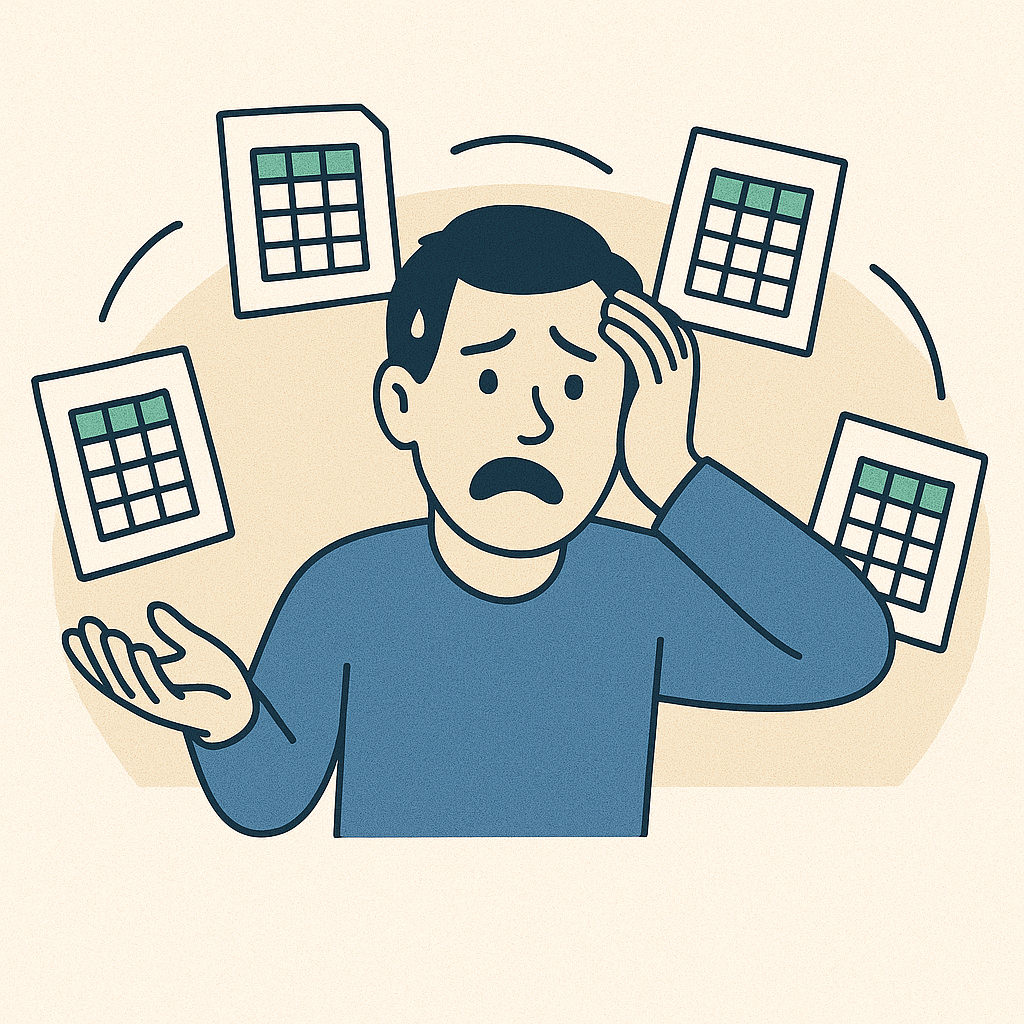We all love our spreadsheets, but if you’re using too many of them, it’s time to reevaluate your winery software.
If you’ve spent any time working at a computer over the last four decades, you’ve probably patted yourself on the back (maybe more than once) after putting together an ingenious spreadsheet that helped you solve a tricky problem.
There’s a good reason why the original spreadsheet program (VisiCalc, released on the Apple II back in `79) became THE killer app that ushered in the personal computer era. Turns out that spreadsheets were the tool that we never knew we all needed until it arrived.
So it might have sounded strange when we said that an easy way to tell if your current winery software isn’t up to snuff is to look at how many spreadsheets are holding your operation together.
But it’s true. If you're constantly pulling data out of your winery operation system, double-entering numbers, or relying on spreadsheets as the real source of truth, it's a warning sign that your software is patching your workflow instead of supporting it.
Every spreadsheet that you insert into the winemaking process is a Band-Aid.
Yes, every single one.
There might be a time and a place for a spreadsheet - like we said, we love them. But overly relying on spreadsheets means that you have a deeper issue that needs addressing, not a minor problem that requires a Band-Aid.
And that issue is your winery software.
“Follow the Spreadsheets”
We’ve worked with wineries of all sizes to help them smooth out their entire winegrowing process. When we “follow the spreadsheets,” we almost always uncover operational scenarios where Blended can help the workflow and eliminate the need for stopgap measures entirely.
Here are the main areas where we see wineries over-leverage spreadsheets (and why they do it):
Discrete analysis
There are two very common workflows where wineries download data from software and jump to spreadsheets:
- Blending simulations/trials — At first blush, that seems to make sense; no one does blending quite the same way, and there are a lot of variables involved (composition percentages, costs, chemical analysis targets, volume targets). But inputting all of those variables takes precious time—time that you don’t have to spend if your software can already provide it (and even support the blending workflow, “what-if” trials, and data directly).
- Barrel stats/management — Again, these require a lot of inputs from vessel summaries before the stats can be calculated, which not only requires extra time on your part, but introduces two points of potential human error (the input, and the calculations).
Communication handoffs
Speaking of potential human error, we’ve seen spreadsheets being used to hand-off information at some of the busiest and most chaotic points of the winemaking process:
- Crush — Using spreadsheets to help coordinate handoffs between the scale house, lab, crushpad, delivery trucks, and winemaking teams? If done while all of those stages are actively in play, the situation is just ripe for data loss or errors.
- Lab analysis — Tracking lab data so that enologists know what's been run, and winemakers can track progress (and flag anything out of tolerance bounds) in a spreadsheet leaves some crucial info potentially outside of the winery software’s ecosystem.
Cue Barry: “Show me wines with recent VA analysis above 0.25 g/L.”
Cost of Goods
Trying to track your cost of goods through spreadsheets? While this is common, it also sets the stage for disaster.
Winemaking is a long, nuanced process, and tracking costs against wine in process doesn’t lend itself to a spreadsheet. Typically, we either see the analysis become so superficial that a rose ends up with the same unit cost as a French oak-aged cabernet sauvignon, or the cost to put accurate analysis together is so significant that it becomes an annual activity.
It's tough to stay nimble as a business if you either don’t have the information you need or, when you do, it's already stale.
In this day and age, accurate cost of goods is a requirement. Your software should be able to do this for you, preferably without a team required to keep it up to date.
Because a Spreadsheet is “Just Easier”
Is it easier to just avoid your software altogether for certain tasks? When this happens, your winery software is just admitting defeat.
Using spreadsheets because they are “easier” than doing the workflow in the software itself means that your software is either seriously lacking, or it’s too expensive to implement the full feature set that you really need.
We've seen wineries use spreadsheets to track Cost of Goods Sold, record essential elements of fermentation tasks (like Brix/Temp and Pump Overs), and to handle customized Work Order formats. All because their software just could not handle it (or the modules that could were prohibitively pricey).
If you’re relying on an unmanageable amount of spreadsheets, it’s probably time to rip off those Band-Aids and get to the root of the problem—and finally let your winery software handle those chores so that you can get back to making wine.





.webp)